September 3rd, 2021
7minute read
Wet tumbling brass is one of the latest things in the reloading world.
With the right equipment and technique, you might return fired brass to its original, shiny self.
The key, of course, is the right tools and methods.

Cleaning Cases
The case is the only re-usable component of a centerfire cartridge.
It is also the most expensive part of a load.
With care, a single case can last for many loadings.
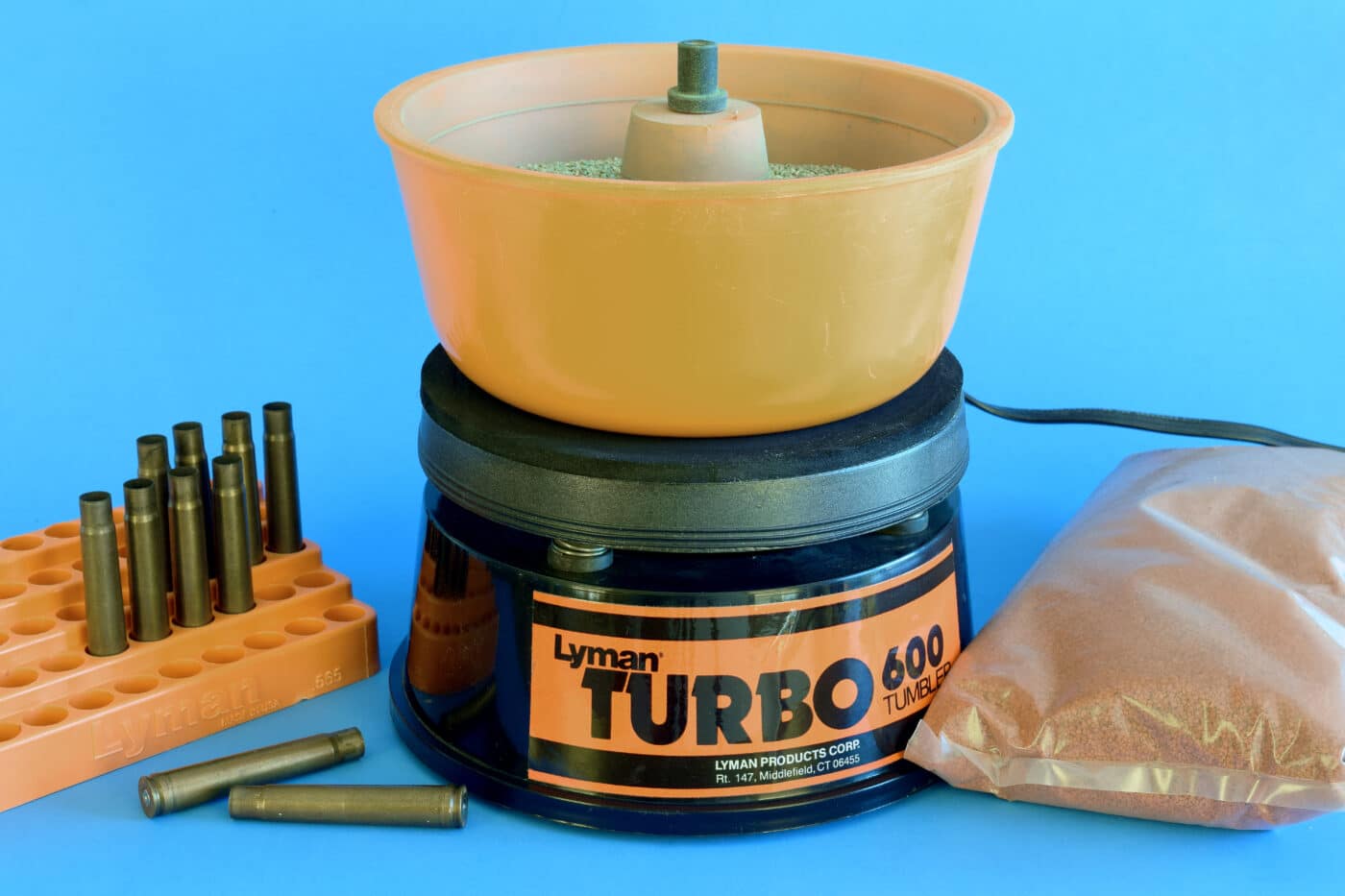
The best cases are made of brass and nickel-plated brass.
Thats one of the reasons why youll hear cases referred to as brass.
Brass cases are made of an alloy that is comprised of about 70 percent copper and 30 percent zinc.

Cartridge brass is strong, ductile and corrosion-resistant.
Cleaning rids cases of surface dirt, which can scratch expensive reloading dies and cause feeding glitches.
Thats like running a dry rag over your sedan once a year.
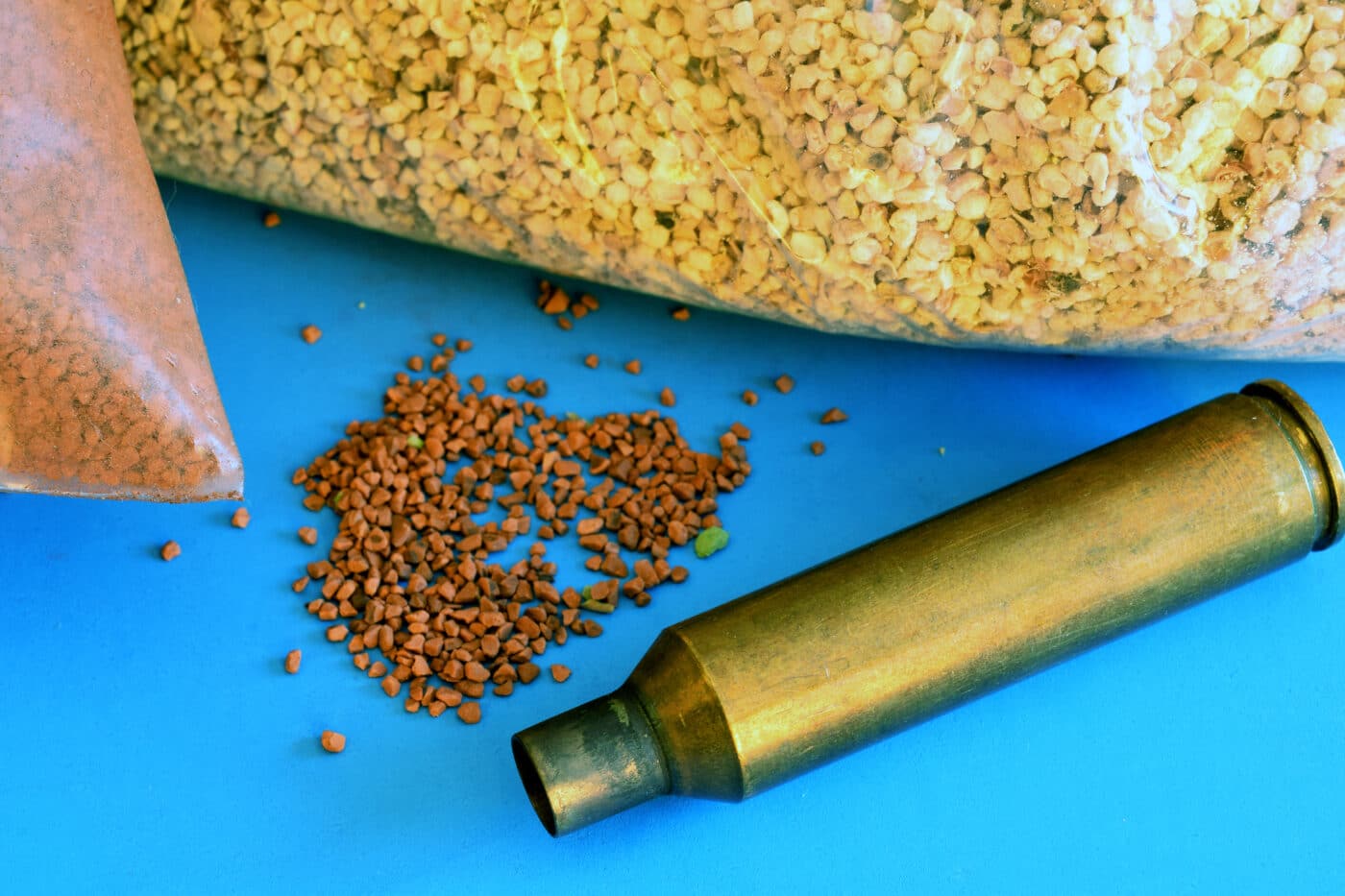
Later, I got a small Lyman 600 Turbo Tumbler and a bag of crushed walnut shells.
But they didnt sparkle.
This discoloring is like bluing on steel.

Its a surface reaction that can prevent further, more damaging corrosion.
Its called verdigris, from the modern Frenchvert de gris, meaning green of grey.
Youll see it on cartridge cases stored in leather belt loops.

Residue from tanning encourages verdigris.
In general, discoloration does not harm the case.
Cases dark with age can perform like new.

In theory, you dont need to invest in a wet tumbler as kitchen remedies for brightening cases abound.
For example, catsup is said by some to work well in some wet tumbling brass recipes.
Not that youd want to rub a case hard enough and long enough with WD-40 to find its brilliance.
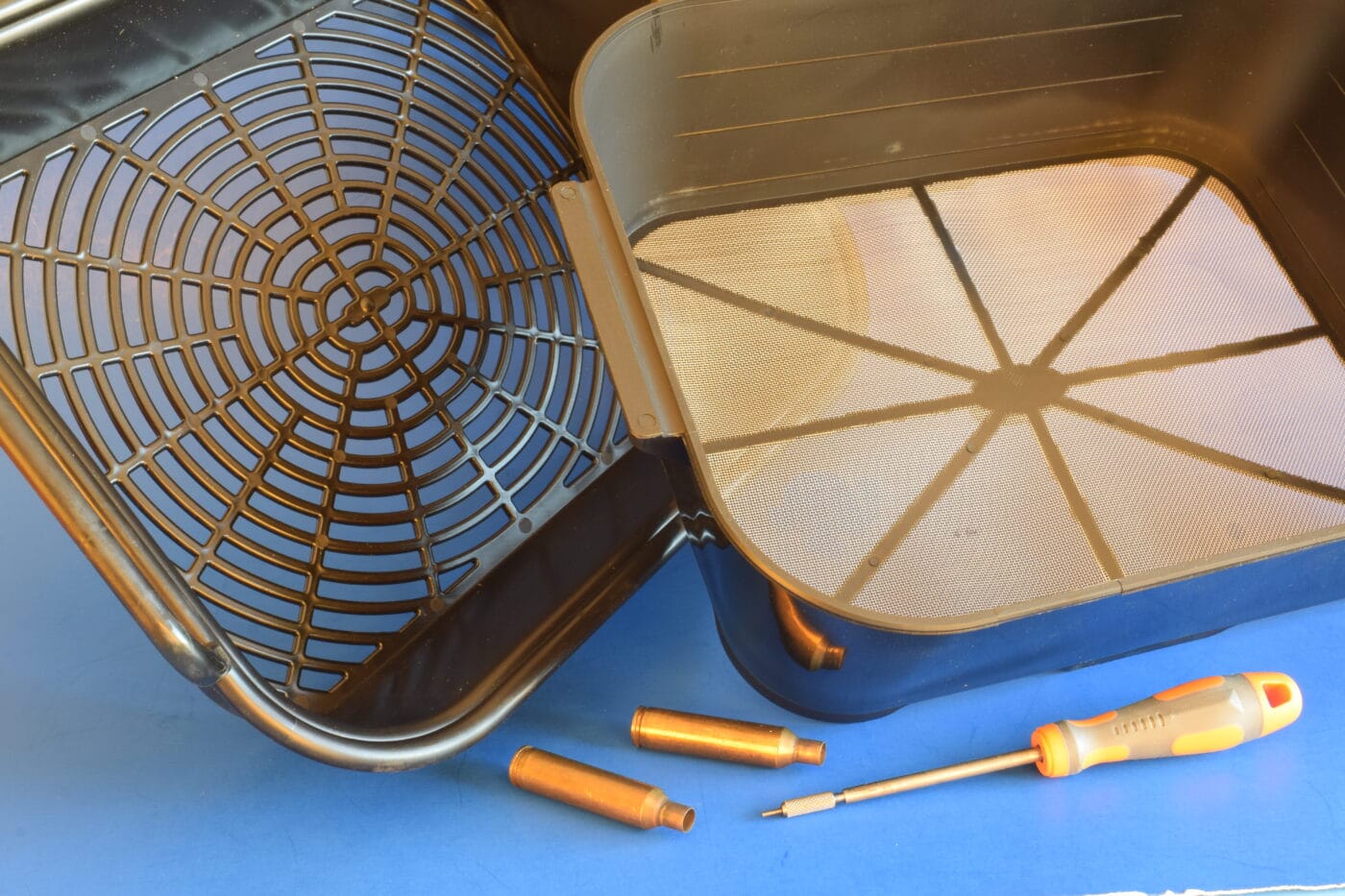
For this, I went to Lyman a company well known for quality products in the reloading market.
I selected the Lyman Cyclone Rotary Tumbler for wet-cleaning cases.
This is not a standard vibratory cleaning system that you might use with a dry polishing system.
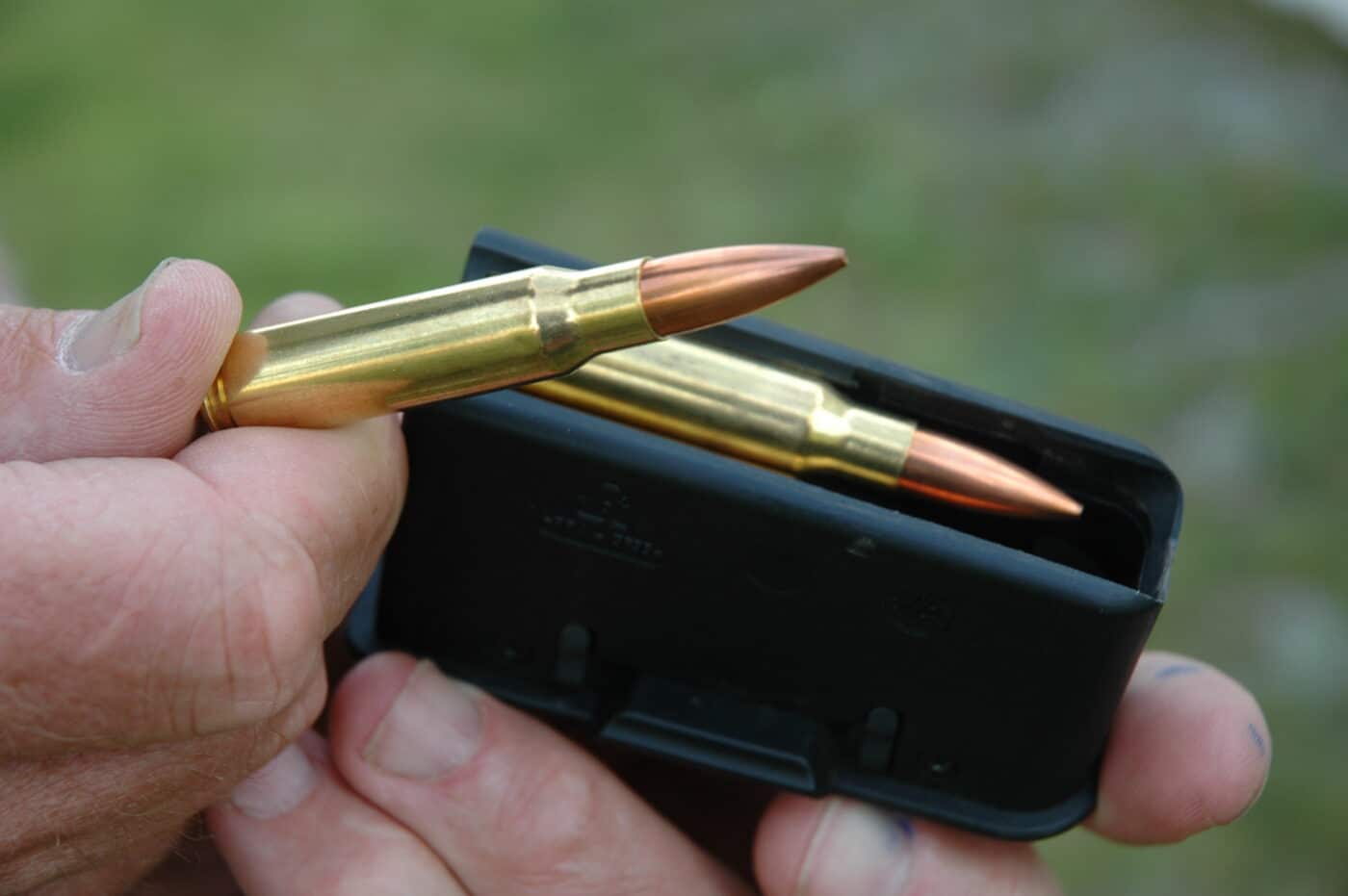
Instead, the Lyman Cyclone comprises a base with two rollers that support a polymer drum.
A 110v motor on a timer drives the rollers, rotating the drum.
The stainless steel media has no head and no point that might damage the brass.
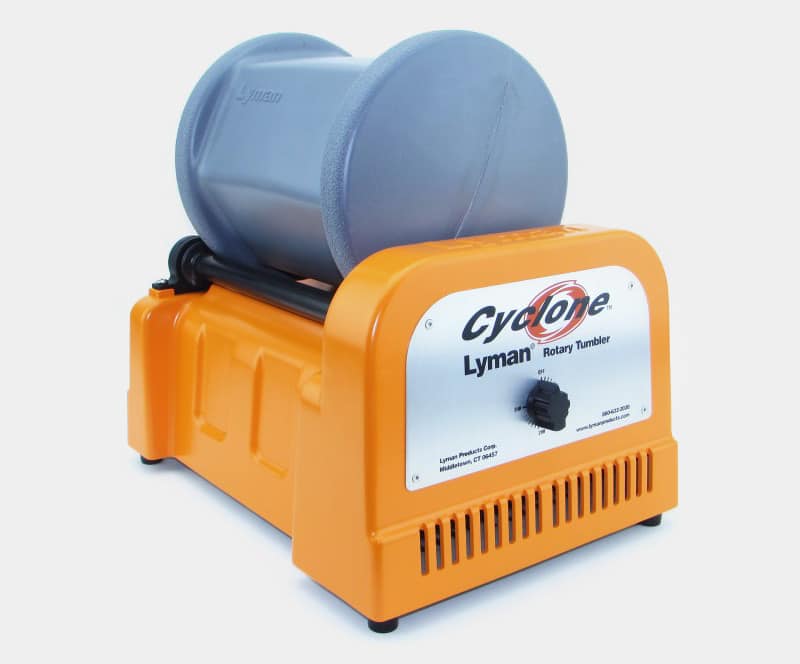
Five pounds is the recommended maximum drum-load size.
How to Wet Clean Cases with the Lyman
Lyman suggests two ways to clean cases.
An alternative: Skip the 15-minute pre-wash. Re-size, then tumble in the water solution with pins.
Allow a few more minutes than if this were a second tumbling.
But youllsavemore time than you might think, as pre-washed cases must be dried before sizing.
The advantage of the pre-wash: it removes debris that can damage dies, and makes sizing easier.
To pre-clean but avoid drying cases twice, why not dry-tumble first, then wet-tumble after sizing?
How Did It Perform?
After a 40-minute shake in untreated corn cob media, they had a fresh glow but no shine.
These got no pre-cleaning.
I re-sized the 6.5 and 06 cases.
After wiping off sizing lube, I added this brass to the 7mm Dakota and .375 hulls.
Upending the Cyclone Rotary Tumbler drum, I began filling it.
Most of the cases were magnums, so I expected to run two batches.
But after loading all, plus 5 lbs.
Unsure at how long I needed to tumble the brass, I checked on it after 50 minutes.
I expected it would need another 50.
To my surprise, the cases looked like new!
I removed the drum and emptied it over the Cyclone kits two polymer screens.
The first caught the cases; the second caught the pins.
Rinses of warm water cleaned the drum and released pins clinging inside the cases.
Just one pin had to be dislodged with a pick.
It was bridged in the neck of a 6.5 Redding case.
I shook the brass dry and spread it on towels.
An hour later, both went onto baking sheets and into an oven, on low.
Use distilled water; itll prevent spotting, a colleague had advised when sharing a wet tumbling brass recipe.
My tap water was kind to the cases, as they did not spot.
With an inexpensive Lyman tool, I checked that flash-holes of de-primed cases were clear.
Dry-tumbled cases came out of the Cyclone Rotary Tumbler looking the same as those with no prep.
Its a worthwhile step if cases are gritty.
I keep brass out of the dirt, so the main debris is powder and primer residue.
Conclusion
Wet tumbling brass strikes me as the most efficient way to retrieve their original brilliance.
Lymans Cyclone wet tumbler with stainless pins in cleaning solution gave me dazzling results in less than an hour.
I have the wrinkles out of the drying routine and know where Alice keeps her cookie sheets.
Meanwhile, the catsup and WD-40 can relax.
Go to forum thread




